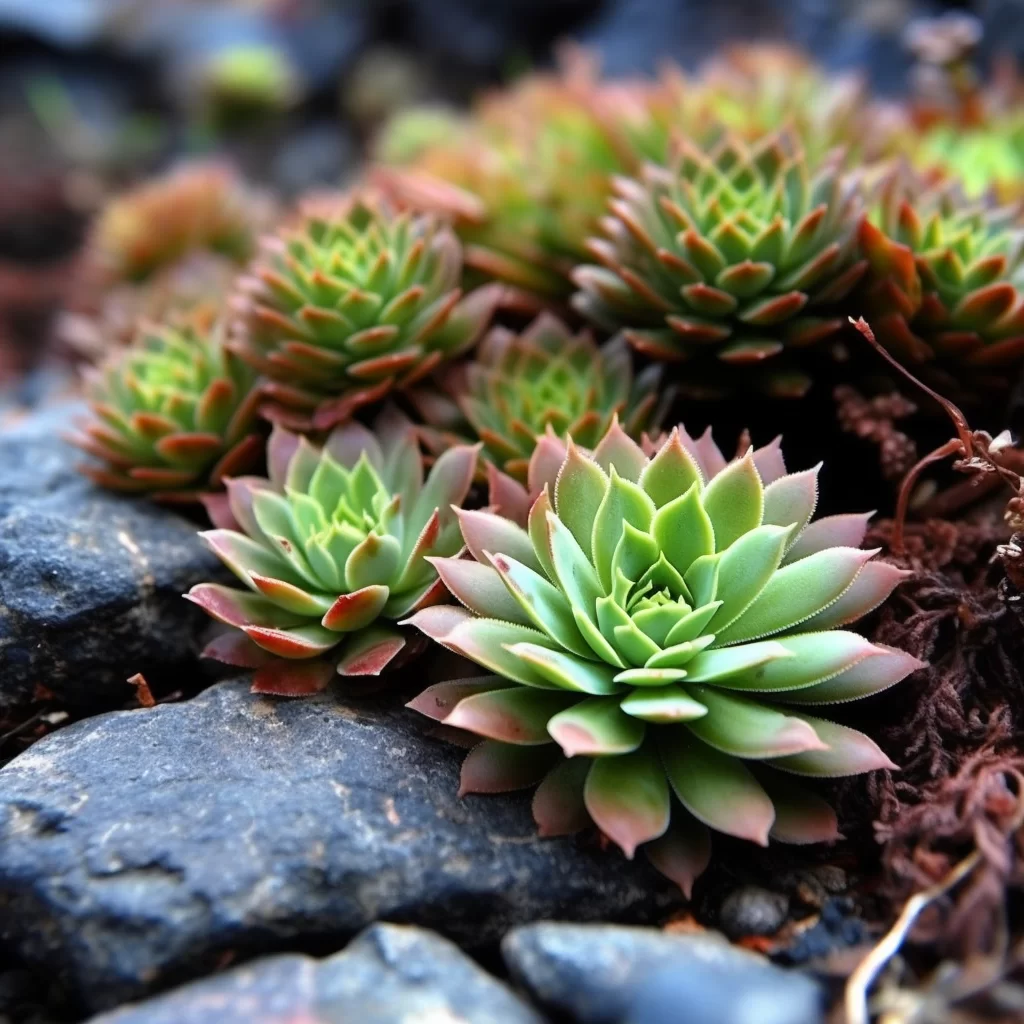Story of Day :
Contents
Hen & Chicks Plant: The Complete Guide and Care Tips
Are you tired of the same old plants in your garden? Are you looking for something unique, easy to care for, and drought-tolerant? Look no further than the hen & chicks plant! This fascinating little succulent is not only visually appealing but also low-maintenance.
In this article, we’ll cover everything you need to know about hen & chicks plant care – from planting to propagation.
What is a Hen & Chicks Plant?
Hens and chicks are succulents that belong to the Sempervivum genus.
They are called “hen and chicks” because of their growth pattern – one large rosette (the “hen”) produces smaller rosettes (the “chicks”) around it.
These plants are native to Southern Europe, North Africa, and Asia but have been widely cultivated as ornamental plants throughout the world.
Varieties of Hen & Chicks

- Sempervivum Arachnoideum: This variety has web-like threads between its leaves that resemble spider webs.
- Sempervivum Tectorum: Also known as common houseleek or roof houseleek due to its traditional use on roofs in Europe.
- Sempervivum Montanum: Native to mountainous regions in Central Europe, this variety grows larger than other hens and chick species with a darker green foliage color.
- Sempervivum Calcareum: Known for its bluish-green leaves which turn pinkish-red during cold weather conditions
Planting Hen & Chicks Plants
The best time for planting hens and chicks is spring or fall.
These plants prefer well-draining soil and do not require frequent watering.
They can be planted in full sun to partial shade but prefer at least four hours of sunlight per day.
To plant hens and chicks, loosen the soil in the planting area and add sand or gravel to improve drainage.
Remove any damaged leaves from each rosette before planting.
Dig a small hole for each chick, spacing them 3-4 inches apart from one another.

Hen & Chicks Plant Care
Hens and chicks are remarkably low-maintenance plants that even beginner gardeners can grow with ease.
Here are some tips on caring for your hen & chicks plant:
Watering:
- Water hens and chicks sparingly – they store water in their leaves, which means they can go longer without watering than other plants.
- Avoid getting water on the leaves since this can promote fungal growth – instead, try to water at the base of the plant.
- If you live in an area with high rainfall or humidity levels, make sure your soil is well-draining to prevent root rot.
Fertilizing:
- Hens and chicks do not require much fertilizer; a light application of slow-release fertilizer once every six months is sufficient.
- Avoid using high nitrogen fertilizers since this will promote leaf growth over rosette formation.

Pruning:
- The lower leaves on hens and chicks will eventually die off which should be trimmed away by cutting off close to the stem with sharp scissors or pruning shears

Sempervivum may be grown indoors as houseplants if provided enough light from a south or west facing window.
Propagation of Hen & Chicks Plant
Hens and chicks are prolific growers that readily produce offsets or new chicks.
To propagate, gently pull off the chick from the mother plant once it is large enough to handle (at least one inch in diameter).
Allow the offset to dry for 24 hours before planting it in well-draining soil.
You can also propagate hens and chicks by seeds, although this method takes longer to see results.
Collect seeds from mature plants in late summer and scatter them over well-draining soil in fall.
Seeds should germinate within two weeks if kept moist.
In Conclusion
The hen & chicks plant is a unique, low-maintenance succulent that adds texture and interest to any garden bed or container arrangement.
The care tips provided above will help you keep your hens and chicks healthy and thriving while providing an easy propagation technique for sharing with friends! With minimal effort, you too can enjoy these fascinating little plants year-round!